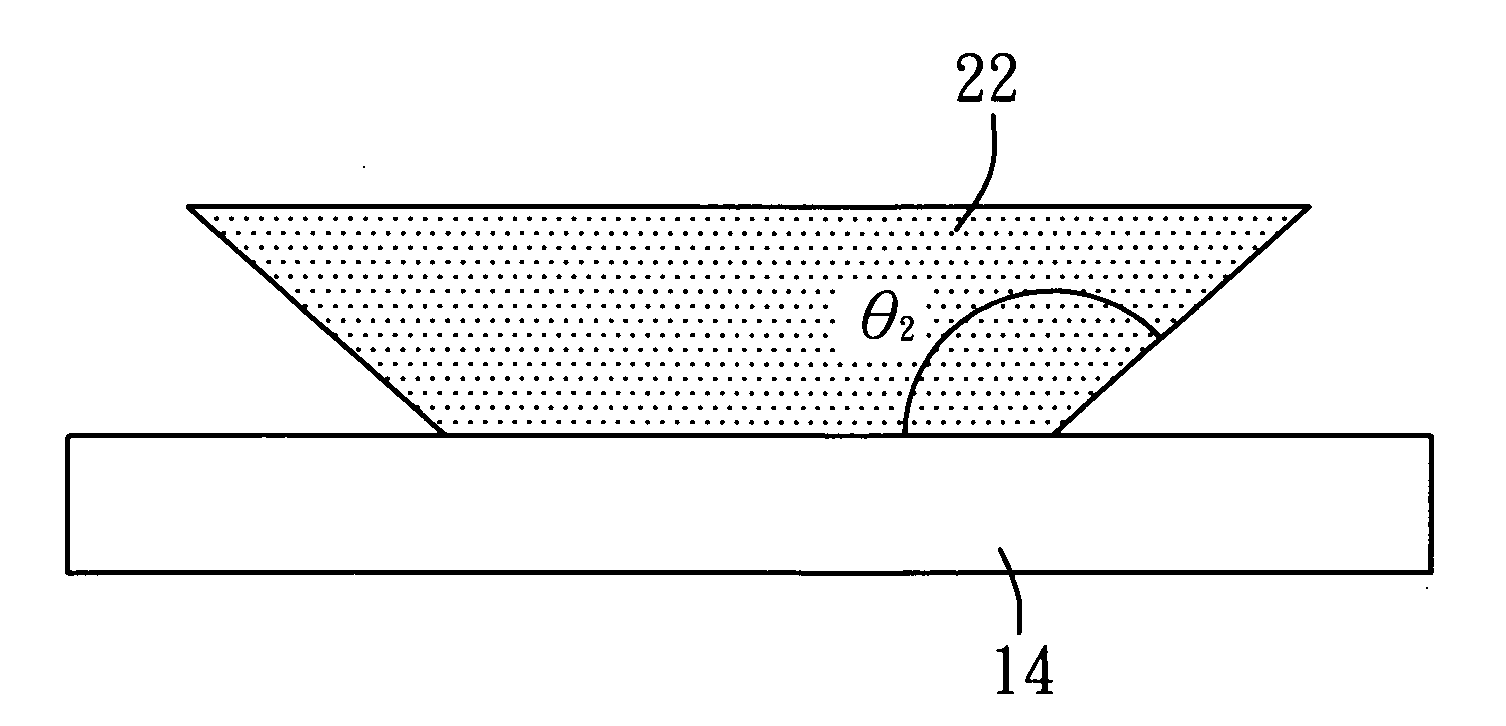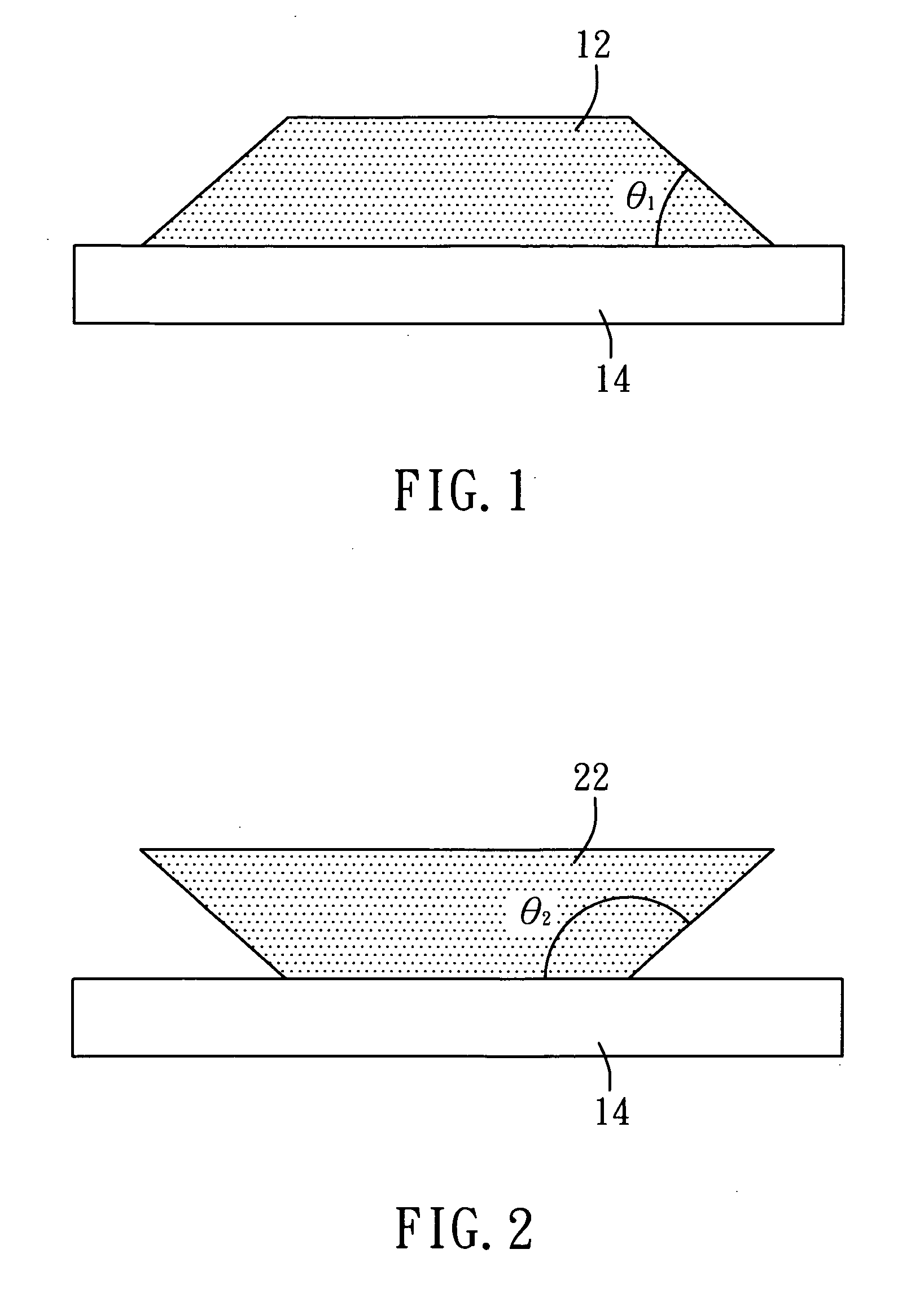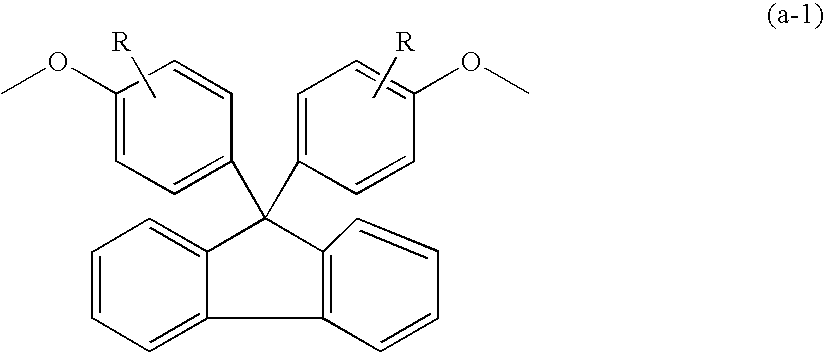Photosensitive resin composition for black matrix
a technology of resin composition and black matrix, applied in the direction of photosensitive materials, photomechanical equipment, instruments, etc., can solve the problems of poor heat resistance, high cost of materials, complex process,
- Summary
- Abstract
- Description
- Claims
- Application Information
AI Technical Summary
Benefits of technology
Problems solved by technology
Method used
Image
Examples
synthesis example a
[0069]A 500 ml separable flask equipped with a stirrer, a heater, a condenser, and a thermometer is introduced with air. Then a mixture comprising 100 parts by weight of bisphenolfluorene-based epoxy compound having formual (a-2) which epoxy equivalent (Eq) is 230, 0.3 part by weight of tetramethyl ammonium chloride, 0.1 part by weight of 2,6-di-t-butyl-p-cresol, 30 parts by weight of acrylic acid and 130 parts by weight of propylene glycol monomethyl ether acetate, was charged to the flask. These components were charged continuously in a rate of 25 parts by weight / minute. The temperature for reaction was maintained at 100° C.˜110° C., and the residence time of reaction were 15 hours. After reaction, a light yellow transparent solution, bisphenolfluorene-based epoxy(meth)acrylate (i.e., Compound (a-4)), with 50 wt % of solid content was obtained.
[0070]Then, an admixture comprising 100 parts by weight of Compound (a-4) obtained as the above, 25 parts by weight of propylene glycol mon...
synthesis example b
[0072]100 parts by weight of Compound (a-4) obtained in Synthesis Example a, 25 parts by weight of propylene glycol monomethyl ether acetate, and 13 parts by weight of benzophenone tetracarboxylic dianhydride were charged in a 300 ml separable flask. The temperature for reacton was 90° C.˜95° C., and the residence time were 2 hours. Disappearance of anhydrous group was confirmed with IR spectrum analysis. Then, 6 parts by weight of 1,2,3,6-tetrahydro phthalic anhydrie was added into the reaction solution. Temperature for reaction was 90° C.˜95° C., and the residence time were 4 hours. A light yellow transparent solution, i.e., the alkali-soluble resin of formula (A-3), was obtained. The acid value of the resin was 99.0 mg KOH / g, and weight average molecular weight was 3900.
[0073]After polymerization, the polymer solution was moved out from the separable flask, and the alkali-soluble resin (b) could be obtained while evaporating the solvent.
synthesis example c
[0074]A 300 ml four-necked conical flask equipped with a stirrer, a heater, a condenser, and a thermometer is introduced with nitrogen. Then a mixture comprising 25 parts by weight of methacrylic acid monomer, 50 parts by weight of benzyl methacrylate monomer, 25 parts by weight of methyl acrylate monomer, 2.4 parts by weight of 2,2′-azobis-2-methyl butyronitrile as polymerization initiator, and 240 parts by weight of propylene glycol monomethyl ether acetate was charged in the flask in one shot. Temperature for polymerization was 100° C., and the residence time was 6 hours. After complete polymerization, the polymer solution was moved out from the flask, and the alkali-soluble resin (c) could be obtained while evaporating the solvent.
[Preparation of the Photosensitive Resin Composition for Black Matrix]
PUM
 Login to View More
Login to View More Abstract
Description
Claims
Application Information
 Login to View More
Login to View More - R&D
- Intellectual Property
- Life Sciences
- Materials
- Tech Scout
- Unparalleled Data Quality
- Higher Quality Content
- 60% Fewer Hallucinations
Browse by: Latest US Patents, China's latest patents, Technical Efficacy Thesaurus, Application Domain, Technology Topic, Popular Technical Reports.
© 2025 PatSnap. All rights reserved.Legal|Privacy policy|Modern Slavery Act Transparency Statement|Sitemap|About US| Contact US: help@patsnap.com



